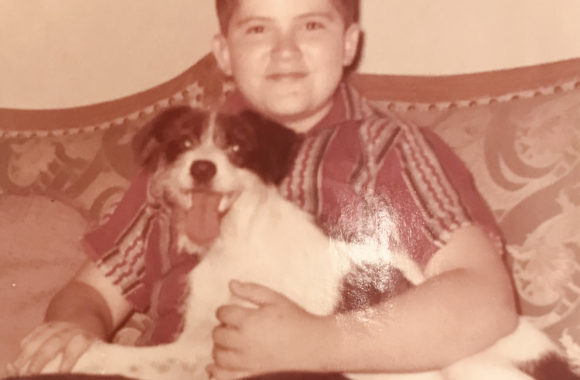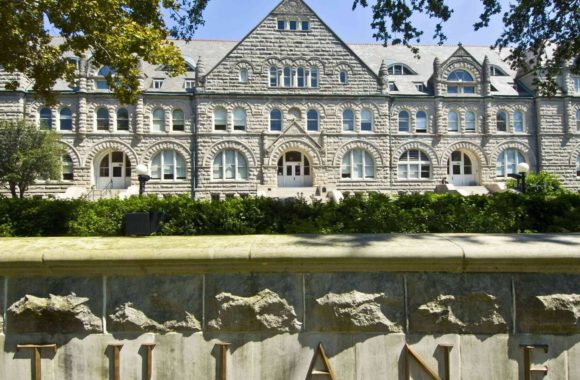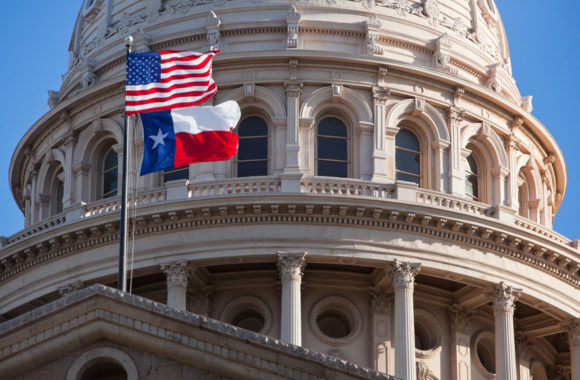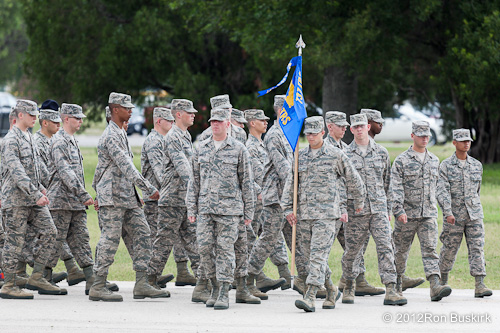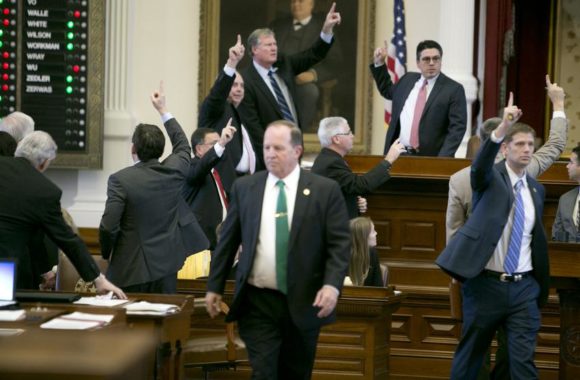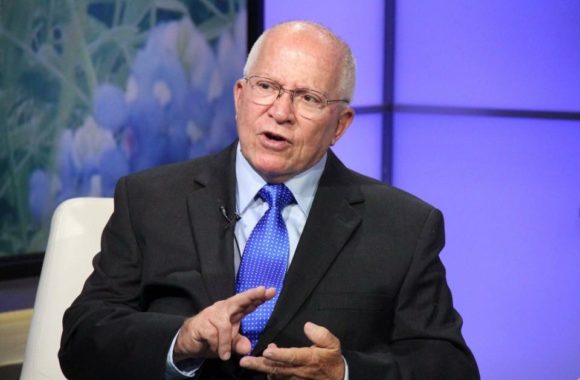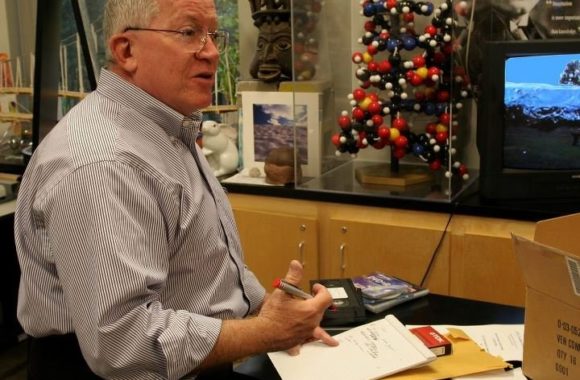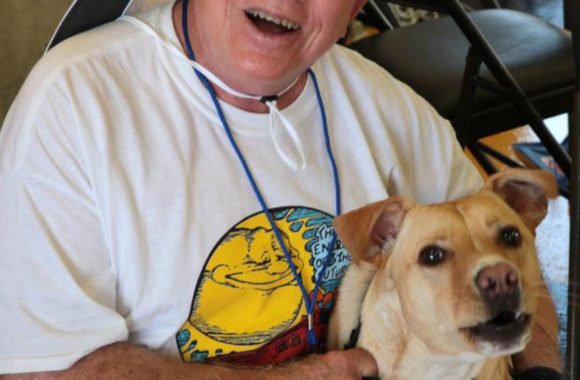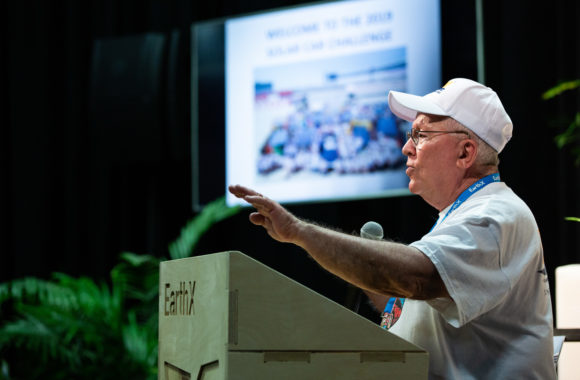My senior year at Tulane arrived with lots of disappointments, but I was faced with a huge inner struggle. I can’t remember a day in my life when I didn’t assure Dad that I was going to be a doctor, but as I got closer to entering Medical School, I found doubts filling my mind.
I had the opportunity to choose my senior year roommate. Bruce already graduated from Tulane Arts & Sciences, and was entering the first year of Tulane Medical School. I planned to find out from Bruce whether Medicine was really for me. I was lucky that our friendship encouraged him to rely on me, and share his experiences.
Our first shared experience was in the choice of his microscope. First year Tulane Medical Students needed to provide their own equipment, so we both explored every vendor that sold medical school-style microscopes. Bruce was so thorough with everything; it made it difficult for him to make quick decisions. That’s where I came in! I’ve always been able to survey the issue and reach a reasonable decision quickly.
We spent two weeks trying out dozens of microscopes and settled on the one I recommended on the first day of our search!
It wasn’t all “study” with Bruce and I. He had a blue Triumph TR3 that could go from 0 to 60 mph in just seconds! Bruce would say: “This car can really snap your neck!” I remember we traveled south of New Orleans to Thibodaux, Louisiana on a mission for our wonderful dorm mother, Addie Albritton. She told us the best crab cakes could only be found in this small community. I asked the name of the seller; Addie said just ask for Mrs. Thibodaux the crab-patty-maker!
Bruce and I thought this name identification to be a bit strange, but when we arrived in this small community, we found almost everyone’s name to be Thibodaux. One man told me they identified themselves based on what they did for a living. I therefore told him we were looking for Mrs. Thibodaux known for her crab cakes. He immediately pointed me in the right direction!
On the way back to New Orleans, Bruce got the TR3 up to 75 mph on a narrow, bumpy county road. Unfortunately, we hit a slick on the road and flipped the car into a ditch. Back in those days, we didn’t have seat belts. Lucky for us, the car rolled in such a way to suspend us out over the ditch rather than depositing us head down on the roadway.
We were un-phased, and simply got some help to turn the car back over. Our new adventure was to be our topic of conversation for weeks.
Bruce started his medical classes; I started my senior year of undergraduate study.
I quickly observed the dorm room light would rarely go off before 2:00 AM. We were both buried in our studies! Bruce pondered every word of Gray’s Anatomy; I was planning my senior Zoology Project.
My entomologically-focused senior project concentrated on cockroaches. I decided to develop a better understanding of the enzyme that causes cockroach bodies to harden and turn brown as they transitioned from the egg to the nymph stage. This project required me to raise several hundred cockroaches, so my portion of the dorm room was filled with cage after cage of these “little fellows.”
Interestingly, we didn’t mind staying up late at night because cockroaches were less active when the dorm room light was on! It was a bit hard sleeping when I turned the light off due to the scampering around of 1200 little legs in cages. Thank goodness the empirical phase of the insect project only lasted three weeks. Bruce threatened to move out if the experiment carried over into a fourth week!
Weekends were more active for Bruce. He would put on his white medical coat and travel to New Orleans’ Charity Hospital. First year medical students were required to put in volunteer hours in the Emergency Room. Bruce would say they always needed hands to empty waste, or scrub down a floor.
This gave me a bright idea! I decided I could better determine if I wanted to be a doctor by actually putting in hours in Charity Hospital’s Emergency Room. I bought my own white doctor’s coat! Now, when Bruce traveled to the hospital, I joined him! We were a team!
Pretending to be a Medical Student
I was amazed! If I walked into the ER wearing my white doctor’s coat, holding a clipboard, and looking official, no one would ever ask a question. I reported to the coordinating nurse, signed in, and began work. Emptying bed pans was my first specialty, but I did have the occasional opportunity to take part in some interesting procedures.
With all of the shenanigans taking place on Bourbon Street, the ER was always frantic over the weekends. Every doctor and nurse needed an extra set of hands . . . volunteer hands. On two evenings, I helped deliver babies. During one of these deliveries, the doctor was called away due to a life-or-death struggle in another part of the ER. As he ran out of the room, he yelled to me: “Doctor, please finish up here.” I did!
I found the more hours I volunteered, the more the regular staff trusted me. Simple suturing became my second specialty. This was easy for me based on all my zoology experience focusing on comparative vertebrate anatomy. I had the good fortune to participate in many of Audubon Park Zoo autopsies when animals died.
One memory stands out from all those many volunteered Saturday evenings. A young man had been hatched in a fight in the French Quarter. The extensive gash ran almost 15” on his left arm. The doctor assigned this case had just started suturing the young man when he was called away for a “Code Blue.” Again, the doctor told me to finish up! I did. I put 72 beautiful, well-formed stitches into this young man’s arm, and if I have to say so myself, I did a great job!
After completing the suturing job, the doctor returned, surveyed my work, and commended me for a really “neat job.” All of these hours and experiences were recorded on 1st Year Medical Students Log Sheets and signed-off each night by the supervising ER doctor.
My life pretending to be a medical student grew bolder! I started accompanying Bruce to his Saturday morning classes. The large teaching theaters held over one hundred students. It was easy to just put on my white coat and blend in with the assembly.
During one of these regular assemblies, students were routinely called on to give a preliminary diagnosis for a patient hauled into the teaching theater. Charity Hospital was filled with hundreds of candidates suitable for study. On one of these mornings mid-way through the first semester, I got called on!
I was in shock. Bruce shook me and uttered some words that I would have to go down to the floor of the classroom and make a diagnosis . . . . . . . . or he would be cooked! I glanced at the clock and realized there were less than five minutes left in the class. I felt in my belly that I could “wing it” for five minutes, and then I would get lost in the crowd as they left the classroom.
Walking slowly to the front of the room, I said “hello” to the teacher, and introduced myself to the patient. This middle aged woman immediately volunteered that she was suffering from pain in her upper chest and raised her dressing gown revealing a large lump under her left arm. Holding her arm up, I carefully examined the lump, then covered the lump with her gown and placed her arm beside her body. I turned to the class and said in a quiet, confident voice: “Doctor, this lady has a cyst.” The doctor confirmed my diagnosis, but thought my statement was less than complete.
The bell rang followed by a hundred students leaping to their feet and shoving their way towards the exits. I thought to myself, if I can just throw myself into this group and leave quickly, I’ll be safe . . . . Bruce will be safe!
I found myself squeezing and elbowing towards the door, but then there was this hand on my shoulder. The teaching doctor arrested my forward motion, turned me around, and said: “I don’t think I’ve ever seen you before!”
One of my built-in problems was my huge sense of honesty. Without thinking, I said: “Doctor, I am not a student.” The shocked look on the teacher’s face was only matched by the pallor that fell over Bruce’s face. I knew that I was in deep trouble.
The teacher, holding my arm, walked me to the Dean of the Tulane Medical School’s Office. He left me with the Dean’s Secretary, knocked on the Dean’s Office door, opened the door, and vanished into the chasm.
It seemed like hours passed before the Dean’s Office door re-opened. The teacher requested I come in and have a seat. This was followed by the teacher rendering a full explanation of what happened. Every word he said seemed like a nail driven into my academic coffin.
The teacher then left the room, quietly closing the door behind him. The Dean stared intensely at me through his small oval glasses that bounced on the end of his nose. Then, he started roaring at me!
“What the hell do you think you were doing?” roared the Medical School Dean. “We just can’t have people coming in off the street and man-handling our patients.”
I interrupted the Dean explaining the purpose for my volunteering hundreds of hours in Charity Hospital’s ER. Trying to speak calmly, I told the Dean I was just trying to find out if I really was “cut out” to be a doctor. The Dean’s demeanor grew more explosive as I shared some details of my service. I told him how much I appreciated helping when help was needed; I told him of the bed pans; I explained the times I was called upon to finishing suturing; I even mentioned my assistance in the two birthing procedures.
Then, the room was filled with a deafening silence. We sat there for what seemed like hours . . . . looking at each other. Then he lowered his head and said: “I have to make an example out of you, and your roommate.” We just can’t afford to have this happen without punishing the guilty parties.
I remember begging the Dean not to interfere with my roommate’s medical school experience. I said: “You can do anything you want with me, but please don’t hurt Bruce. He was only trying to help me.” But the Dean would have none of it! Bruce was to be expelled from Medical School, and he would ask the Dean of Arts & Science to discipline me, his academic words for being expelled.
I remained quiet for a few moments, then, grasping my clipboard with all my signed-off volunteer hours, I abruptly started making a few quiet “points” to the Dean. I asked him what the people of New Orleans would think if they knew the Medical School allowed a 20 year-old undergraduate student to suture-up patients, take part in birthing babies, and provide care for injuries. I went further telling the Dean: “If you throw Bruce out of Medical School, I will call a press conference the next day and let the City of New Orleans know what you let me do!”
By this time, I was waving my clipboard with signed-off volunteer hours (and tasks) sheets. I added loudly: “Dean, this is my proof. What is the media going to say?”
Again, there was another of those horrible silences. The Dean took off his glasses, cleaned them, and looking squinty-eyed at me said: “What do you want?”
In a quiet voice that came from somewhere deep within me, I said: “Dean, all I want is that you do not harm my roommate’s medical career. After all of these experiences, I really don’t want to be a doctor. If you let Bruce go, and don’t inform my Dean, you will never hear from me again.”
I made the snap decision that Medical School was not for me even though I had been accepted in the next freshman medical school class. This really was not a “snap” decision. I was anguishing over this dilemma for months. I just needed a “push” to make up my mind.
The Dean’s response was quick. He said in a low, muffled tone: “Just get out of here.”
I jumped up and walked quickly towards the door. Before I reached to turn the door knob, the Dean interjected: “Hell son, you should never have been a doctor, you should be a lawyer.” I turned around with a bit of a grin on my face and replied: “You’re right!”
Now I did it! I made my decision. Now, I would have to tell Dad and live with the consequences. Bruce’s medical career was never impacted by my volunteering in the ER. He went on to become a successful doctor in Amarillo, Texas.
A Car in College
I didn’t get a car until my junior year of college. My wonderfully protective family wanted to make sure I would appreciate a car. I always had access to the family Buick, but I usually just grabbed a ride with Billy, Jim, (“Volkswagen Man”), or Kay. In college, I didn’t need a car because the Ferret Jet” (New Orleans bus) was always available, or a New Orleans street car. But every person needs a car! It is a sacred rite associated with “coming-of-age.”
I found my dream car during a weekend trip to Houston. It was a used, baby blue 1962 Thunderbird! It was beautiful! It had the lines of a piece of art, and had less than 5,000 miles on her! Dad helped me buy it matching my money dollar-for-dollar. I can’t fully share the great pride that filled me as I drove my first car off the Used Car Lot.
Mom and Dad were a little concerned since I would be driving the T-Bird back and forth to New Orleans. I gently reminded them about all of the overnight train rides that filled my first three years of college, and the great adventures that filled each one of these trips. Surely, these experiences qualified me for cross-country travel!
Although many of my classmates flew home, I found myself spending many holidays sleeping on the floor at Moisant Airport (Louis B. Armstrong Airport). It seems that the great god of weather found it interesting to fog-in the airport during holidays, thereby canceling flight after flight. I just found it more reliable to buy a ticket on the overnight train leaving New Orleans at 10:00 PM and arriving in downtown Houston around 6:00 AM! I remember my Dad always meeting me with a huge grin on his face.
Dad had taken me on several business trips earlier in my life. We always traveled by train. I learned to appreciate the nuances of train travel, including the importance of becoming friends with the conductor and porters, and how to handle sleeping arrangements. Pullman cars that made-up into beds at night always fascinated me.
I remember one great Tulane Choir trip to Mexico. We were traveling from Monterrey to Mexico City by train. This proved to be a high speed swerving and jarring experience. The fun really began when the Mexican Porter transformed our seating car into sleeping berths. I remember climbing into the bed with my focus on the countryside leaping past my train window.
Then, I focused my gaze at the foot of my berth. There was some kind of latch I never noticed before. After looking at it for several minutes, I decided any “good latch” needed to be pulled! Without anticipating the consequences, I went ahead and released the latch, and immediately found myself folded up into the wall! I was to learn this latch held the bed in place! Now, my nose was resting against my legs and I was trapped. After considerable wiggling, I was finally able to slip my hand and arm out of the bed and began waving it in the train aisle.
Of course, this catastrophe occurred around 2:00 AM, so I had to wait several hours to be rescued. The running joke was that I had given “berth” to a new form of train travel.
Medical School Decision Takes Me to Austin
I withheld my discussion with Dad until after graduation. I didn’t want to upset their fun at my Graduation Ceremony. So all through my senior year, I was telling my parents that I was going to be “that doctor.”
When I arrived back in Houston after Graduation, Dad helped me unpack my car and carry my “stuff” up to my room. I remember Dad saying: “Why didn’t you leave some of this stuff in New Orleans since you will be going back in the fall?” A flare of honesty crossed over me and I blurted-out: “Dad, I am not going to be a doctor . . . . I have decided to go to Law School in Austin.”
Dad didn’t say anything to me. He didn’t talk to me for several days. I would catch him staring at me from time to time, but no words. The silence was horrible. Then he said: “Mom and I think it would be best if you go ahead and move up to Austin. This will give you time to find a job.”
I re-packed my car the next day and headed to Austin. I had no job, no place to stay, and was not yet accepted to Law School. Luckily, I had taken the Law School Aptitude Test while in New Orleans, passed it, and applied to the University of Texas School of Law. UT Law was reputed to be one of the twelve best law schools in the country, but I had no idea how they would react to my late application. Dad gave me a few dollars, but let me know I was on my own for this law career.
Arriving in Austin mid-day, I set out to find an apartment close to school. I had tucked away some of my previous summers’ job earnings giving me enough money for two months . . . . if I scrimped! My main priority now was finding a job.
I stalked the halls of the Law School checking out bulletin boards that might give me a clue about potential jobs! The bulletin boards had unfortunately been cleared for the summer, but I ran across a wonderful secretary in the Law School Dean’s Office. She told me the Texas Legislature was going to be meeting in Special Session that summer, and they would be looking for aspiring law students for staff! This was music to my ears!
It was quickly apparent I was not going to get any job unless I had the support and sponsorship of a state legislator. Then I saw it! My high school Government Teacher was now a member of the State Legislature! It took me about 20 minutes driving like a mad man to get to the State Capitol. I located Hank Grover’s Office, and sat myself down in the outer office until he returned from a committee meeting.
The look on Hank Grover’s face was amazing! It was like he was looking at a long lost relative. He came over, shook my hand, and hugged me! I have to admit I really needed this because I had no friends in Austin. His hug was reaffirming!
Grover sat me down in his office and asked what he could do. I explained my job dilemma, and that I only had two months of resources. He told me not to worry, and to head over to the Texas Railroad Commission. He said he had some influence there and he would help me find a job!
Hank had called ahead “greasing the wheels” at the Texas Railroad Commission.
I later learned this legendary state agency had little to do with trains, but was charged with the responsibility of regulating oil wells in Texas! The staff member interviewing job candidates asked me if I knew anything about zip codes. I responded that I knew the U.S. Post Office would soon require all mail addresses include a zip code, but that was about it! That was enough. She told me I was hired!
I found out later I had the job as soon as I opened the door to the building. This was to be my first involvement with “legislative influence.” I was totally grateful! Unfortunately, it was only a part-time job . . . . I had to find something else to help supplement my income.
State Capitol Building Tour Guide
The halls of the State Capitol were wondrous, filled with inspiring pictures depicting the history of Texas and its great citizens. At the time of its completion in 1888, it was one of the largest buildings in the world. It was taller than the U.S. Capitol Building. I felt inspired to discover every bit of history about this larger than life building.
I seemed more drawn to the Senate side of the State Capitol Building. Maybe this resulted from the beauty of H.A. McArdle’s historic pictures hanging in the Senate Chamber. I found myself sharing facts about these paintings with visitors, and came up with the great idea to approach the Secretary of the Senate for a job being a tour guide. There was no State Capitol Tour Guide Service in 1965.
To my surprise, Secretary of the Senate Charles Schnabel offered me a part-time job giving tours. I was to set up a folding chair at the base of the stairwell on the Senate side of the Capitol, have an identification badge, and offer tours to visitors. I soon became known as “super cricket” because of the way I would leap from my chair to offer tours. The Senate even made me a badge that said “Super Cricket”.
I loved this job. It gave me such an appreciation for Texas History and this grand old building. I was researching Texas History day and night! To my surprise, the Senate took down the McArdle paintings for restoration and cleaning. This revealed intricate historic details penned on the back of the paintings by the painter himself. I would use these bits of trivia to enrich my tours and bring a bit of humor to the tour groups.
I remember standing in front of McArdle’s “Dawn at the Alamo,” a 13’ x 8’ painting of the last morning of the siege at the Alamo. A wonderful group of elderly, blue-haired ladies were on my tour of the Capitol. One of these ladies noticed that McArdle painted a dog at the bottom of the picture. She asked me: “Young man, can you please tell me the name of that dog in the painting?” Since the title of the painting was “Dawn at the Alamo,” I quipped: “Lady, the dog’s name is Dawn.”
One of the other questions I always received was how in the 1880’s did they place the Goddess of Liberty Statue on top of the Capitol Building. The answer they liked best was my expanded explanation which relied on the ancient Egyptian Principle of the inclined plane. I told them the builders constructed a huge ramp from Town Lake up to the top of the Capitol Building, and pushed the statue up the ramp to the top of the dome. Everyone seemed satisfied they had just heard the best explanation about this great 16’ two thousand pound statue. In reality, records show the statue was hoisted to the top of the capitol by a crane, but visitors always liked my slanted view of history!
A New Texas Senate Job
I soon finished my zip code job at the Railroad Commission. It took me three months to add zip codes to the addresses of every oil well in Texas, but all good things have to come to an end. Again, I was searching for a job, but this time it would have to be one that wouldn’t interfere with Law School. Yes, I was accepted into the 1965 Law School Class.
Relying on my Senate friends, I discovered the Senate Post Office needed someone to post newspapers/mail from 4:00 A.M. to 7:00 AM. This job would be perfect since it would allow me to attend morning classes. I snapped up the job and launched my career with the Texas Senate.
It always amazed me the number of newspapers that arrived at the Senate each day. Every hometown publication was of key importance to a State Senator’s career, so he had to have a copy of the hometown newspaper. Notice I said “he.” There were no women yet in the State Senate.
Every morning I made coffee in a giant coffee pot. It would be ready for the Sergeant-at-Arm’s Staff when they arrived around 7:00 AM. Every morning an older man would wander through the mail room, get his letters and Lubbock newspapers, and walk on through to his office. Living outside Texas for four years, I was unfamiliar with the body politic. It took me several weeks to learn this older man walking through my mail room was Lt. Governor Preston Smith!
I started having this old man’s coffee ready for him when he arrived. He was absolutely the most punctual man I ever knew, a trait he imparted to me! He started bringing a few doughnuts and we would spend about 10 minutes enjoying the quiet of the morning, and discussing world events. He was sharp . . . . . always looking for the relevance of today’s events, and comparing them to other politically historic happenings.
On one of these mornings, Preston Smith told me a bit of gossip! It related to the “goings on” between rival staff members. We discussed the conflicts between the two parties, and then agreed not to mention it again. Two weeks later, the Lt. Governor arrived a bit early for our usual coffee session. He looked more business-like. This was highly unusual because our mornings had always been filled with light, frivolous chatter.
Preston Smith looked me in the eye and said: “You never revealed our conversation about my rival staff members.” I had a sudden loss for words because I didn’t know where the conversation was going. He added that he had fed me a “line-of-bologna” to see if I could keep my mouth closed! After two weeks, he heard nothing from anyone about this “bologna” story, and suggested I was a trustworthy person. He then leaned over and said seven words that would change my immediate life: “I want you to work for me.” My heart was pounding just thinking the Lt. Governor of Texas wanted me to work for him.
I learned a most valuable political lesson. The MOST important characteristic politicians look for in their employees was “tight lips,” and “extreme loyalty.” This was true then and still bears great weight today!
I was still in Law School at UT, but this was a once-in-a-lifetime opportunity. I found myself coming to the Capitol early, leaving for morning classes, then returning to the Senate Chamber to help in that day’s assignments. I was working as an Assistant assigned to Jeff Davis, Sergeant-at-Arms.
My respect for Jeff Davis was boundless. He taught me about the Art of Senate Politics, and that lofty Senators were just like everyone else. Jeff introduced me to his good friend, Senator Jim Bates.
Edinburg Senator Jim Bates told me: “Son, you put on your pants the same way I do: one leg at a time!” He taught me not to be intimidated by anyone; I was just as “big” as they were! I learned so much from this outstanding senator who on more than one occasion would go to “bat” for me! He showed me the importance of a strong sense of loyalty.
Jeff Davis pointed out that a few Senators were hugely respected for their knowledge of Senate Rules, and how to they wielded those rules to get what they wanted. Senator Dorsey Hardeman from San Angelo was the Master of the Rules. If he got up to oppose your motion or amendment, you knew your legislation was going to bog down.
Another great Rules Man, Babe Schwartz from Galveston, taught me the importance of senatorial integrity and standing up for what you believe. He taught me how to give a speech, and how to point your finger without making anyone think you were pointing at them!
Other State Senators also played a big role in my life. Ralph Hall from Rockwall always helped me accomplish whatever task needed to be done. He showed me the importance of fairness in dealing with people that didn’t agree with you. He went on to become one of the longest-serving United States Congressman from Texas, and often showed up at educational events I would host later in Dallas.
I was also fond of tall, lanky Charlie Wilson from East Texas. His easy-go-lucky attitude made him a loveable member of the Senate who got-along with everyone. Then, there was the “Bull of the Brazos,” Senator Bill More from Bryan/College Station. He had earned his “Bull” reputation based on his stern demeanor and unwavering control of the Senate State Affairs Committee.
As would happen during a “testy” legislative session, work would continue deep into the night. Senators would wander away from the Senate floor until someone requested a Quorum Call. If there were too few senators, the Senate would have to adjourn. Of course, the Lt. Governor wanted to finish that day’s business, so he would put a “Call” on the Senate” which meant the Senate Sergeant-at-Arms would have to find and bring back absent senate members.
I never had a problem finding the “Gray Fox,” Senator Grady Hazelwood. The senator told me if the Senate needed his vote, I could always find him at the private Citadel Club in the historic Driskill Hotel. If he was inebriated, I was to bring him back, sit him in his senate chair, and vote him “Aye” by holding up one of his fingers. Mission accomplished on more than one evening.
Bringing in Bill Moore was a bigger issue. He lived across the street from the Capitol in the Westgate building. I planned ahead and brought two Department of Public Safety Officers as “back-up.” They proved to be useless because they feared their career would be damaged by hassling such a powerful member of the Senate. I noticed they stayed near the elevator as I walked about 100 feet to the Senator’s apartment.
There was no answer to my first two knocks on the door. I started to knock a third time when the door banged open revealing a man with his shirt tail out, holding a bottle of bourbon in one hand, and sloshing liquid out of a glass with his other hand. I proceeded to tell the Senator the Lt. Governor had put a “Call” on the Senate, and I was there to escort him back to the Senate Chamber.
The roar that came out of this man was chilling! I wasn’t sure if it was anger or laughter. He told me in no uncertain words that I was not going to take him over to the Senate. He looked at my 5’4” height and laughingly said, “Son, do you really think you’re going to be able to make me do anything?” I remember saying: “Senator, I just don’t know, but I am going to start biting you on the knee and continue to bite until you come back to the Senate.”
Senator Moore apparently thought this was the funniest thing he had ever heard! Here was a short kid willing to bite him on his knee! I could see him picturing this event in his mind. I glared at him with every ounce of intensity in my body. It worked! The Senator grabbed his coat and we headed to the elevator. Riding down on the elevator, the senator looked at the DPS officers and said: “You guys need a bulldog like this one on your force.” Everyone laughed.
Playing Golf With Lt. Governor Preston Smith
As Senate friendships developed, I found Preston would take me to play golf with him. I always asked Preston why he wanted to play golf with such an inexperienced golfer like myself. He responded: “Son, every politician needs someone to make him look good!” I knew then I was there to help make him look good!
I used to “kid” Preston about taking advantage of my poor golfing skills, and suggested he should at least buy me some golf lessons. He laughingly agreed, gave me some money, and set up some golf lessons with the “Pro” at the Austin Municipal Golf Course.
I arrived at the first lesson with my set of clubs and lots of jitters. I knew how bad I was! The Pro asked me for the $50 fee, and directed me to show him my golf swing. If I remember right, I almost missed the ball. My throat choked up as I looked at the exasperated expression on the Pro’s face.
The Professional Golfer was trying to find the right words to express his thoughts. He finally said: “Marks, here is your $50 dollars back. I can’t do anything to help you.” He stomped off before I could say anything.
I returned to my car and cruised around Austin contemplating what I was going to tell the boss. Two hours later, I heard a news flash on the radio that said: “Famed Golf Professional has died of a heart attack at the Austin Municipal Golf Course.”
They were talking about the Golf Pro I just talked to several hours earlier! I was horrified! Was my golf swing so bad that it gave the Pro a heart attack? I guess I will never know, but I do feel some sense of responsibility for his passing.
Working in the Senate at Night
Working for Lt. Governor Preston Smith often meant spending 16-18 hours a day in the Senate. I was always amazed about the people I would see working in the Senate late at night.
I remember the time I saw a light in the Lt. Governor’s Office after 8:00 PM and decided to investigate. Maybe Keith or one of my other Senate friends had returned to work on a project so I wanted to say “hello.” I opened the door to the inner office. I didn’t find Keith, but a Texas House Member named Bob Bullock.
Bob was stunned I caught him in Preston’s office! He was caught red-handed copying the information inscribed on key donor index cards. Interestingly, Bob Bullock and I became good friends after that! Whenever our paths would cross in the years ahead, he always went out of his way to show me respect and courtesy. I never revealed I found him in Preston’s Office . . . . until now!
Bob Bullock would go on to become one of the State’s outstanding Lt. Governors. I remember visiting the Senate Chamber Gallery years later during a lobbying visit to the Capitol. Bob was presiding over the Senate. He saw me in the gallery and beckoned me to come down to the floor. He met me at the Senate door, stunning the Doorman, and walked me up to his presiding platform. We visited for ten minutes before he had to resume his duties. Bob was always such a gentleman. I was delighted to see the new Texas State History Museum would be named after Bob Bullock!
The key to any political campaign can be measured by the contact lists and files maintained on that politician’s constituents. Preston Smith had thousands and thousands of political contacts set out on individual index cards that were organized by community. These cards had the name of the contact, family information, donations, and past working alliances. This information was worth political gold. It meant if Preston were to visit Amarillo, he could go through his cards indexed “Amarillo” and see the names of everyone in that area who supported him . . . . including their wife’s and children’s names.
On more than one occasion, I saw Preston disembark from an airplane to find a large group of admirers waiting for him. He would go through his index cards before exiting the plane, and meet the public with full knowledge about the people he was greeting along with something personal to say about their family. Everyone he greeted seemed to appreciate they were “special” to him.
I remember this same quality in President Lyndon Johnson. I had the opportunity to work for his 1964 Presidential Campaign during my college days. On one of LBJ’s campaign trips to New Orleans, I had a chance to visit with him before he was going out to “work the crowd.” I asked him: “Doesn’t shaking hands make you extremely tired?”
LBJ looked me squarely in the face and confirmed it wore him out, but he took the time to explain the “basics” of handshaking. He showed me how you have to take control of the handshake by placing your thumb behind the thumb of the person you’re greeting. This keeps them from “milking” your hand or gouging their rings into your hand. “Any way,” he said, “I love meeting these people.”
I accompanied President Johnson and his entourage of Secret Service to the reception where I observed him shaking hands with hundreds of grateful people. He always made everyone feel special because he seemed to know something about everyone. Maybe this is a Texas trait, but it seems to work everywhere.
My Next Visit with LBJ
I would not see LBJ again until after I did my military service and setup my office in Austin’s Westgate Building. I had a great patio office on the first floor located next to the Texas Trial Lawyers Association and Jake Jacobsen’s Office, LBJ’s trusted Legislative Assistant. My office location was ideal for my legislative and consulting activities.
Lyndon Johnson had now completed his Presidency and returned to Texas residing at his 1500 acre working ranch along the Pedernales River. I always kidded Jake that the next time LBJ came to Austin, he should bring him over to my office for a visit. Jake would laugh and we would go our separate ways.
Then, one day, without any advanced notice, my front office door opened. I could hear my secretary talking to some people I would soon learn to be LBJ’s Secret Service Detail. They wanted to know who was in the office. She explained it was only me. This was quickly followed by the loud footsteps of men walking fast down my outer hallway. I opened my office door to see President Johnson and Jake Jacobsen heading in my direction, after stopping briefly to see rural bluebonnet paintings I had “on-loan” from the Country Store Gallery.
The first thing Johnson said to me was: “Boy, where did you get this rug?” My offices were carpeted with bright orange shag carpet. The carpet pile was so deep that walking barefoot was almost like walking on a floor of hay.
The President looked around my office spotting a picture of John F. Kennedy on my wall. He strode over to that picture, ripped it off the wall, and flung it swirling across my mahogany desk. He did it with such force that the photo flew completely across the desk and fell crashing to the floor breaking the cover glass. The sound startled the Secret Service Detail who arrived with guns drawn. LBJ quieted them down and sent them out of the room.
I will never forget what LBJ said to me after the picture broke. He said: “I thought we got rid of them.” There are just too many meanings to speculate on what the President was thinking at that time.
My inner office had a large gold chair that I used. This was flanked by a three-seater greenish velvet couch flanked by end tables and gold harvest lamps. Lyndon situated himself on the large couch, and his 6’4” frame just seemed to expand across the whole piece of furniture. Jake had to sit in an adjoining chair. LBJ said: “Let’s talk.”
Again, this personal interest displayed by a veteran politician was admirable. Before entering my office, he had stopped to shake hands with my secretary, a lovely young lady who was married to a descendant of the Indian Chief Quanah Parker. She told him about her husband. He wanted to know more about Quanah Parker, but Jake moved him on to my office.
In my office, on my couch, he turned his full attention to me. We had a heart-felt dialogue about what I was trying to do to improve Texas State Legislative Research, and to track legislation as it flowed through the process. He got up and strolled around the room examining photos of my wife and daughters, diplomas, and awards. He wished me all the best with my endeavors, and strolled nonchalantly out the door of my office. I was never to see LBJ again.
My Wonderful Joy (Virginia Joyce Williams)
The summer before I started Law School was filled with a special person, Virginia Joyce Williams. I met Joy when my family decided to vacation in Eureka Springs, Arkansas during the summer of 1965. I really didn’t want to go to Arkansas. Mom and I always tried to steer Dad to take vacations in Colorado, but for some reason, Dad was hooked on stories praising the beauty of Eureka Springs.
We arrived at this quaint “tourist court” called Mount Air. It had few amenities, but it was chocked full of families and kids, including the Guy Williams Family. I soon became resigned to the idea that it was going to be a dull summer trip. Yes, Eureka Springs had mountains, but it was warm and humid with little to keep me occupied.
As it turned out, I was the oldest “young man” at the motel; Joy Williams was the oldest “young lady” at the motel. It seemed we just got stuck with the young kids when parents wanted to go shopping, or sightseeing. It didn’t take me long to realize this girl was special. We both had strong personalities that just “clicked.” I knew she was going to be a success in life, and she seemed to believe in me. I fell in love with this cute, blond headed sweetheart!
Joy and I corresponded over the next few months. She was teaching elementary school in Memphis; I was entering my first year of law school in Austin. Our letters became more intense which spurred an invitation to visit the Williams home during the Christmas Holidays.
I arrived in the middle of a snow/ice storm. I stayed at Memphis’ famous Peabody Hotel known for its ducks swimming in a small pool located in the lobby. Unfortunately, the hotel was located downtown so it turned into an ice storm adventure just getting a taxi to take me to the Williams home in the suburbs. Ice was inches deep on the roads topped off with inches of snow. I distinctly remember the taxi driver demanding a tip for this hazardous adventure.
I finally arrived at the Williams home located on a 10’ rise above the ground. I barely could stride up the icy side walk, but finally made it. Rang the bell! Joy’s Mom, Louise, answered the door. She swung open the screen door which inadvertently knocked me off the front porch. I went backwards sliding down the sidewalk to the street level. This probably did not give the Williams the best impression of this ambitious young Texan.
I remember Joy and I decided to leave the house for dinner at a Trader Vic’s Hawaiian Restaurant located a block from their house. We trudged through the ice and snow arriving at this little “harbor of happiness.” With such bleak weather, this restaurant was perfect for two lovers.
I knew I wanted to marry Joy the first time I met her, but I barely knew her! We had just spent 10 days together in Eureka Springs, followed by dozens of letter exchanges, but I was certain she was the perfect girl for me.
During that cold, unusual visit to Memphis, I asked Joy to marry me! I remember her eyes being big as saucers, but she didn’t say “No.” She said we needed to take a little more time to think about this. I therefore invited her to come to Houston to visit my family over Easter Vacation.
Joy and I had our Houston rendezvous all planned. We had lots of fun things on our schedule, but I had just one secret plan: I was going to ask her to marry me again!
I sprung the question! She said: “Yes.” I was bursting with happiness. We decided to tell my family at lunch on Sunday. Mom had planned a special outing at Houston’s famous “Sunny Looks Steakhouse.”
We arrived at the steak house, made a little small talk, and placed our order. Then, as my Dad was biting into an olive from the salad, I announced Joy and I were going to get married! There was a moment of absolute quiet, followed by my Dad exclaiming that he had just broken off his front tooth biting into the olive. They were shocked, but extremely happy for us. We had their blessing.
I don’t think the Williams ever liked the idea their little girl would be moving to Texas. It seemed Louise just didn’t like me. She introduced me several times as “What’s his face.” But I look back at this now, with the benefit of having my own family, and better understand that it must have been hard to see Joy leave Memphis.
Joy discovered she needed to take Texas Government before she could teach school in Texas, so we arranged for her to come to Austin during that summer and take a course at the University of Texas. I would take summer courses at the Law School and she would take her Government class at UT. And we, together, would set out the course for our life.
These were wonderful, romantic days. We filled our free time exploring Lake Travis, and enjoying John Sanders’ famous peach daiquiris. John lived on the floor directly below my small one-room apartment in Austin. We became great friends when my toilet exploded sending all kinds of mess into John’s bathroom.
John had already received his naval commission and was doing graduate study at UT. All John wanted to do was water ski using his 15’ motor boat. He tried to teach me to ski, but it didn’t work. He admitted later he was having fun with me by pretending to teach me to ski when the water temperature was 45 degrees.
I remember being positioned in the water and anticipating the boat jerking me up to a standing position, but the boat didn’t move. I kept yelling to John urging him to start the boat, but the boat didn’t move. He said he was having difficulty starting the boat, but this was just an excuse to stall. He knew my legs would get stiffer and stiffer in the cold water!
When the boat finally started and bolted forward, I found my legs were frozen. I couldn’t fully extend them to rise up out of the water on the skis. I ended up drinking gallons of water as I was being pulled face-first through the lake. He laughed his “nose” off; I was frozen, but shared the humor of the experience. Not to worry, we developed into a great duo: I would drive the boat and he would ski. I “accidentally-on-purpose” ran John into a partially submerged fence as payback for the frozen ski lesson episode. Good Memories.
Joy loved going boating with John. She was quite a sailor having taught sailing and waterfront activities through the Girl Scouts.
I wanted to impress Joy, so I asked John to secretly teach me how to sail his SunFish sailboat. Although I had been a two-week member of the Tulane Sailing Club, I never developed any real sailing skills. (Remember, I sunk my Tulane boat).
John would get me started and I would be fine for about 50 feet, then I would flip the boat. This went on hour after hour as I tried to learn basic skills. I just admitted to myself I was not cut out to be a sailor, and limited myself to driving John’s boat!
The Whitman Tower Episode
During that summer of ’66, everything was wonderful. Joy was staying at a supervised living community for young ladies, so on more than one occasion, I had to help her over the exterior wall so she could bypass the locked front door.
But one thing happened that almost ruined our summer: a crazed shooter mounted the University of Texas Tower Building arriving on the 28th floor, and began firing on the crowd below during a busy lunch time. Charles Whitman was to kill more than a dozen people, and wound thirty-one others.
I was in a Law School Class when the shooting alarm reached my classroom. We were encouraged to take shelter. Of course, what did all the students do? We trampled each other trying to get out the front door to look at the tower! We could hear “pops” and see bullet flares rising from the observation deck of the tower. Then, the bullets started peppering the ground in front of us!
I ran back inside to find a phone realizing Joy would have been crossing the main campus courtyard headed to her Government Class. Panic filled my heart! Was Joy one of the injured or killed? I jumped in my car and tried to approach the base of the tower, but Police would not allow me anywhere near the building. I pulled off the road and jumped out of the car. Shots were continuing to rain down from the Tower.
I was stunned to see crazy people with rifles shooting at the Tower. These were not Police, but Texas gun enthusiasts. I knew they wouldn’t be able to “take out” Whitman, but their careless shooting could create dangers for the people huddling behind planters and stone structures in the plaza. One of these bullets could hit Joy.
The minutes that followed were some of the longest in my life. It was more than two hours before I would learn Joy was safe, and had taken refuge behind a stone structure in the courtyard. I remember embracing her with all my might when I found her after the shooting. This horrendous event would crystallize how much Joy meant to me . . . . . and would mean to me throughout our 53 years of marriage. (As of 2020)
Joy returned to Memphis and spent the year teaching. I would spend my time in my second year of legal study, with emphasis on being a young politician with a great job in the Texas Senate.
The Wedding and Honeymoon
A full year later, August 19, 1967, Joy and I would marry in Memphis Tennessee. It was a beautiful wedding at Bellevue Baptist Church, but I have to admit I remember little from the ceremony, except for the mind-flashes from the wedding photos. You might say I was in shock as I contemplated all the consequences ahead of me.
The wedding reception was held at the church, and again I have almost no memory except for how excited my Dad was to throw rice on us as we left the reception area. My Aunt Katherine, the grand dame of my mother’s family, graced us with her presence at the wedding, along with my dear Uncle Joe and Auntie Carol Ann.
I do remember the Bachelor Party coordinated by Bill Bammel and attended by the groomsmen. Knowing Billy, I knew this was not going to be completely fun! He arranged the party in a small ballroom at the Memphis Holiday Inn, the event hotel. Yes, there was the usual drinking and good stories, but then the command was given to grab me. They ripped off my clothes and shaved my “private areas” in front of everyone! I am naturally a physically shy person, so this mortified me.
I still don’t know who all saw me in “the natural,” but I am sure it was payback for the prank we played on Billy at his bachelor party in 1966. We put a combination padlock on his genitals and gave the combination to the hotel front desk clerk.
Joy and I stayed overnight in Memphis at a motel closer to the airport. This got us away from the wedding frenzy, and made it easier for us to get to the airport the next morning. I remember going out to the car only to find it was surrounded by dozens of cats. Billy confessed he placed frozen shrimp in the car’s hub caps before we left the wedding reception. The shrimp thawed overnight and attracted quite a bit of excitement at the motel.
I was so glad to board the early morning flight to Acapulco, Mexico. I found a wonderful honeymoon package at Las Brisas that offered a private bungalow and pool draped in red hibiscus and bougainvillea. We also had a private “Pink Jeep” that could take us around the city, or into the mountains.
I was concerned about the Jeep because it had a 5-speed on-the-floor transmission. My experiences in the Air Force told me shift vehicles were my bane! I remember being tasked with driving my Air Force General up Congress Avenue during a Veterans Day Parade. The Air Force sedan had a shift transmission.
The parade was about a mile long with marching bands and soldiers, but for some reason beyond understanding, they made the parade stop at every light! This was totally crazy . . . . . not only for the marching units, but also for one inexperienced air force driver, ME! Every stop was characterized by jerky starts and stops resulting from my lack of experience using a clutch.
When we arrived at the State Capitol Building, the General leaped from the sedan, stuck his head back into the passenger-side window, and said: “Son, I survived World War II and the Korean War, but I just about didn’t survive the drive to the State Capitol Building.” I was never assigned to drive the General again.
This history of “fear-of-the-shift” would plague me when I learned the Las Brisas jeeps had a 5 speed gear-on-the-floor shift. I reached out to David Vinson, my Best Man, to help me with this problem. He had access to a Jeep, so I figured he could give me some real driving instruction.
Dave was a brilliant instructor! His calm demonstration of 5-speed shifting made sense and I quickly picked-up the technique. Now, the interplay between shifting and the clutch made sense. I was driving like a “pro” in one afternoon. This experience would be pivotal during our honeymoon in Acapulco.
Joy and I decided to take a Jeep side-trip into the mountains South of Acapulco. We asked the young couple in the bungalow adjacent to our room to join us on this trip. They were delighted because their wedding package didn’t come with a Pink Jeep!
The four of us set out with great anticipation . . . . . again . . . . . another adventure.
We drove the Jeep several miles off road seeing some of the small villages, rural people, and pigs. Then, about five miles into our off-road experience, we were stopped by a dozen well-armed military pointing their guns at us, and telling us in Spanish we needed to return to the main road. It didn’t take much encouragement for me to turn the Jeep around and get back on the main road. We later learned rebels in the area had been causing problems, and these Policia Federal were undertaking a clean-up operation. We almost wandered into a shout-out.
We all decided it would be best to return to the hotel. Spirits were high after getting ourselves out of this conflict. Then, without warning, I discovered the brakes were failing. I pumped the brakes like a madman, but had little response. We were headed down a hilly, winding road with an ocean drop off to the left of the road. A steep soil embankment went up from the right side of the road.
Our speed was increasing! I had only seconds to respond before we would encounter downhill curves, so I veered sharply to the right. This drove the front of the Jeep into the soil embankment bringing us to an abrupt stop, but we were safe. No one was thrown out of the jeep; there was minimal damage to the vehicle.
The accident occurred within sight of Las Brisas. We walked back to the hotel and had them pick up their Jeep. The hotel was hugely apologetic and “comped” a dinner in their Open Air Master Dining Facility. This was to be a marvelous dining experience.
The Las Brisas stay was chocked full of fun experiences, like the time I injured myself in a physically “private area.” I remember telling Joy I needed to find a doctor. This would prove to be a challenge . . . . a language challenge. How do you talk to a wonderful Mexican Doctor about a “private-type” injury? The doctor did his best job to explain my injury would take care of itself. This was not encouraging when Joy wanted to go swimming in the ocean. I remember our hotel friends laughing at me saying they never saw anyone get out of salt water so quickly.
We returned to Austin ready to start a new career.
Post Script on my Law School Experience
I loved my law school experience and the demanding nature of every class, and the charisma of every law professor. Keith Markley and I started law school together by standing in the same hall in a line that stretched for 100 feet. The line was arranged alphabetically so Marks and Markley were standing next to each other. We immediately bonded with his Refugio country humor and my New Orleans jokes. We would remain best friends throughout Keith’s life.
My first year was traumatic. I had spent the preceding four years developing a highly sophisticated scientific background. There was so much to read in undergraduate school that I had to take a speed-reading course in New Orleans. It amazed me how a person could speed-read a book in just a few minutes and come away with 80-85% retention. Then Law School hit. Emphasis was placed on every single word, so that reading speed took a nose dive.
I also found that although I had taken the required English Courses, I was woefully unprepared to write law school documents. My first year was spent with my basic law subjects along with an intense effort learning how to write. This became even more evident when I got back my first semester exam from Professor James Treece. The low mark was a new experience for me.
I remember bolting to his office, knocking on the door with tears running down my face, and pleading: “Professor Treece, what did I do wrong?” He took pity on me and sat me down on the floor of his office. I was sitting next to a stack of exams over two feet tall. He said: “Read them.” I did, I read every word comparing my paper with these other papers. I was to learn the importance of knowing what a professor wanted from his students, and how best to feed it back to him. I would go on to take every class Professor Treece taught. This amounted to 24 class hours earning me an “A” in each of these classes.
Two other professors stick out in my mind. The most stinging experience I had in Law School would be in Charles Allen Wright’s Federal Courts class. September arrived and law students were headed to their first classes. I realized my Federal Courts class would be something special because it was being taught by the famous Charles Allen Wright. Friends told me he always felt jilted when President Eisenhower failed to appoint him to the U.S. Supreme Court. He therefore took out this grudge on his students.
It was the first day of class. The 150-seat amphitheater-style classroom was filled with energetic second year students. Renowned for his use of the Socratic teaching method, Wright’s eyes scanned the classroom and finally fell upon me. He said: “Mr. Marks, would you please tell us the facts of the first case?” I quietly replied that I was not prepared, and apologized.
Unfortunately, I didn’t have my textbook. I had just deposited my summer check in my Austin bank account, and hesitated to go to the campus bookstore before it cleared the bank. I arrived at this first class without my textbook and with no advance preparation. This, I would learn, was an unforgivable sin to Professor Wright.
Professor Wright’s eyes squinted as if to take in every inch of me. I thought sitting on the front row would demonstrate enthusiasm for the course and the teacher. Instead, it made me more vulnerable. His gaze finally went on to another student who recited the facts and the law in that first case.
Now, it was time for the class to consider the second case. Mr. Wright looked at me and said: “Mr. Marks, will you please tell us the facts of the second case?” I again begged his pardon explaining I didn’t have the money to buy the books yet, but I would be doubly prepared for the next class. The professor scowled at me again making every fiber of my body die a little bit. Another student was called on and provided the requested information.
Now, it was time for the third case. You could have cut the silence in the room with a knife! It was deafening. Professor Wright walked over in front of me and said in a powerful burst: “Mr. Marks, will you please tell us the facts of this case?”
At this point, tears were streaming down my face. The humiliation was horrible. He had made every effort to press his point that you better be ready for his class. I stood up quietly and started walking up the amphitheater steps leading out of the classroom. I could feel the sympathetic eyes of my classmates watching me stagger up the steps.
Then, without any warning, Professor Wright bellowed: “Marks, if you leave this classroom, you will never be allowed to return.” Inspired by an inner voice yelling in my ear I turned and said: “Professor Wright, I am sorry I did not have my textbook, but you should be ashamed for the way you’ve treated me. I will not come back into your classroom, BUT I will take your final exam and make an “A.” I stomped out of the classroom to the roaring applause of 149 other students.
As you can imagine, I only studied one thing that semester: Federal Courts. Most of the students eagerly shared their class notes with me. Since final exams were anonymous, I planned to submit my paper and get my grade. I earned an “A.” That was one of the hardest grades I’ve ever earned.
My favorite Law School Professor was visiting professor Dean Robert Drinan from Boston College of Law. He taught Family Law. He was intensely interesting, filling every class with hugely meaningful issues and questions. I think his teaching style may have come from his Jesuit Teaching Method which evolved from St. Ignatius of Loyola’s holistic view of the world. He was dynamic and mesmerizing. We never wanted his class to end.
I ended up working for him one semester as a student assistant. His influence stressing the importance of facts and being a “searcher for truth” still resonates in my mind today. He was my first “Commander Spock.” Dean Drinan would go on to be a U.S. Congressman from Boston until Pope John Paul II ruled that a priest could not hold political office. The country would miss his good efforts and wisdom.
I graduated from Law School, but never attended the famous Sunflower Graduation Ceremony. If my memory serves me, I was involved in a political campaign that needed immediate attention. Now, I wish I had attended. The campaign would not be successful and leaves no memories; the Sunflower Ceremony would have been a good memory. Oh, the decisions of our youth.
I regret I did not dedicate myself more to my legal studies, but I found my work with the State Senate and political leaders so much more rewarding. I did go on to take numerous post-graduate hours easily scoring “A’s” and spent two years teaching Law School.

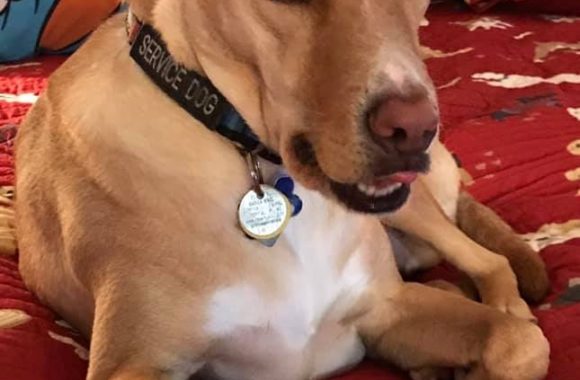
 My Dad taught me many things over the years I had the privilege to work for him. Of course, as a teenager, I moaned and groaned about the work. I wanted to be out with my friends, but Dad never listened to my complaints. (Good for him!)
My Dad taught me many things over the years I had the privilege to work for him. Of course, as a teenager, I moaned and groaned about the work. I wanted to be out with my friends, but Dad never listened to my complaints. (Good for him!) 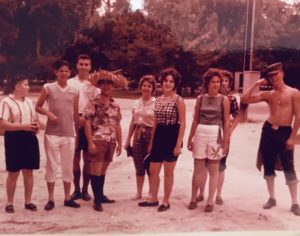 Billy demanded I join his “little group” for simple outings . . . . like eating French Fries with the “gang” after school. His friends would meet at a great Pharmacy/Lunch Counter located across the street from Lamar High School. A dozen regular friends would share plate after plate of steaming hot French fries with mountains of ketchup. I reluctantly went with him to these painful sessions. I was the “awkward duck.”
Billy demanded I join his “little group” for simple outings . . . . like eating French Fries with the “gang” after school. His friends would meet at a great Pharmacy/Lunch Counter located across the street from Lamar High School. A dozen regular friends would share plate after plate of steaming hot French fries with mountains of ketchup. I reluctantly went with him to these painful sessions. I was the “awkward duck.”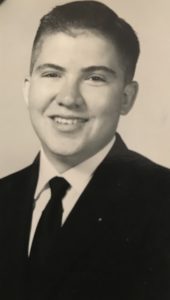 Billy and I stayed close friends even through college. He went to Texas A&M; I went to Tulane University. Our schools weren’t rivals, but we shared the normal fun that comes with college rivalry. Having said this, we decided that each of us would share the other’s school rituals. I was to come to College Station and pretend to be in the Corps; Billy was to come to New Orleans and share Mardi Gras.
Billy and I stayed close friends even through college. He went to Texas A&M; I went to Tulane University. Our schools weren’t rivals, but we shared the normal fun that comes with college rivalry. Having said this, we decided that each of us would share the other’s school rituals. I was to come to College Station and pretend to be in the Corps; Billy was to come to New Orleans and share Mardi Gras.